- Home
- Ian McDonald
Clarkesworld Magazine Issue 76 Page 5
Clarkesworld Magazine Issue 76 Read online
Page 5
About the Author
Yoon Ha Lee is an award-nominated Korean-American sf/f writer (mostly short stories) who majored in math and finds it a source of continual delight that math can be mined for sf/f story ideas. Her fiction has appeared in The Magazine of Fantasy and Science Fiction, Clarkesworld, Tor.com and Beneath Ceaseless Skies. Her collection Conservation of Shadows will be published in 2013.
The Wine-Dark Sea: Color and Perception in the Ancient World
Erin Hoffman
“And jealous now of me, you gods, because I befriend a man, one I saved as he straddled the keel alone, when Zeus had blasted and shattered his swift ship with a bright lightning bolt, out on the wine-dark sea.”
—Homer, The Odyssey, Book V
Perception is a funny beast. Homer’s “wine-dark sea” has puzzled scholars for centuries, leading to such far-flung hypotheses as strange weather effects, air pollution, and mass Grecian color-blindness.
It’s a phrase repeated in the works of W. H. Auden, Patrick O’Brian, and Brian Jacques, among others. Reading it today, we naturally assume that it is intended as allegory, some evocative reference to the sea’s mystery, its intoxication.
We may never know for sure, but one peculiar fact casts the mystery in an interesting light: there is no word for “blue” in ancient Greek.
Homer’s descriptions of color in The Iliad and The Odyssey, taken literally, paint an almost psychedelic landscape: in addition to the sea, sheep were also the color of wine; honey was green, as were the fear-filled faces of men; and the sky is often described as bronze.
It gets stranger. Not only was Homer’s palette limited to only five colors (metallics, black, white, yellow-green, and red), but a prominent philosopher even centuries later, Empedocles, believed that all color was limited to four categories: white/light, dark/black, red, and yellow. Xenophanes, another philosopher, described the rainbow as having but three bands of color: porphyra (dark purple), khloros, and erythros (red).
The conspicuous absence of blue is not limited to the Greeks. The color “blue” appears not once in the New Testament, and its appearance in the Torah is questioned (there are two words argued to be types of blue, sappir and tekeleth, but the latter appears to be arguably purple, and neither color is used, for instance, to describe the sky). Ancient Japanese used the same word for blue and green (Ao), and even modern Japanese describes, for instance, thriving trees as being “very blue,” retaining this artifact (aoao toshita: meaning “lush” or “abundant”).
It turns out that the appearance of color in ancient texts, while also reasonably paralleling the frequency of colors that can be found in nature (blue and purple are very rare, red is quite frequent, and greens and browns are everywhere), tends to happen in the same sequence regardless of civilization: red : ochre : green : violet : yellow—and eventually, at least with the Egyptians and Byzantines, blue.
“Why then ’tis none to you; for there is nothing either good or bad, but thinking makes it so.”
—Hamlet, Act 2, Scene 2
Blue certainly existed in the world, even if it was rare, and the Greeks must have stumbled across it occasionally even if they didn’t name it. But the thing is, if we don’t have a word for something, it turns out that to our perception—which becomes our construction of the universe—it might as well not exist. Specifically, neuroscience suggests that it might not just be “good or bad” for which “thinking makes it so,” but quite a lot of what we perceive.
The malleability of our color perception can be demonstrated with a simple diagram, shown here (http://faculty.washington.edu/chudler/eyecol.html) as figure six, “Afterimages.” The more our photoreceptors are exposed to the same color, the more fatigued they become, eventually giving out entirely and creating a reversed “afterimage” (yellow becomes blue, red becomes green). This is really just a parlor trick of sorts, and more purely physical, but it shows how easily shifted our vision is; other famous demonstrations like this selective attention test (its name gives away the trick) emphasize the power our cognitive functions have to suppress what we see. Our brains are pattern-recognizing engines, built around identifying things that are useful to us and discarding the rest of what we perceive as meaningless noise. (And a good thing that they do; deficiencies in this filtering, called sensory gating, are some of what cause neurological dysfunctions such as schizophrenia and autism.)
This suggests the possibility that not only did Homer lack a word for what we know as “blue”—he might never have perceived the color itself. To him, the sky really was bronze, and the sea really was the same color as wine. And because he lacked the concept “blue”—therefore its perception—to him it was invisible, nonexistent. This notion of concepts and language limiting cognitive perception is called linguistic relativism, and is typically used to describe the ways in which various cultures can have difficulty recalling or retaining information about objects or concepts for which they lack identifying language. Very simply: if we don’t have a word for it, we tend to forget it, or sometimes not perceive it at all.
The famed neuroscientist Dr. Oliver Sacks (you might know him as Robin Williams’s character in Awakenings) described a poignant example of linguistic or conceptual relativism with regard to schizophrenia. Accounts of the disease prior to the 19th century are rare, and none at all exist in ancient literature (as opposed to “madness,” which was documented, but primarily concerned aimless wandering and spontaneous violence). The broad classification of “madness” persisted well through the 19th century, with schizophrenia identified in the early twentieth, and still considered rare through the middle of the century. When Sacks began practicing in 1965 in New York City, and in particular began studying disorders related to schizophrenia, he was shocked by a gradually increasing awareness that the disease was not nearly as rare as the science of the day claimed—especially among the homeless. Importantly, the clinical assumption that “schizophrenia is rare” was reinforcing the rarity of its diagnosis, to the point of blinding doctors to what was right in front of them. These blooms in diagnosis—we have been for the last ten years experiencing a bloom in autism recognition—have as much to do with clinical perception as they do with the actual physical incidence of the conditions.
On a lighter note, Sacks also recently recalled that the most magnificent thing he had ever seen in his life was a field of yellow, seen while he was—is it appropriate to say a famous neuroscientist was high? Say rather that he was conducting experiential research in a varied state of neurochemical condition! But however you slice it, he says it was the most yellow yellow he had ever seen or expects to see again, a yellow beyond description, a yellow of interstellar radiance and the breath of ancient gods.
It isn’t the first time that Dr. Sacks has discussed color and altered states: in “The Dog Beneath the Skin,” he tells the infamous story of the 22-year-old medical student who, under the influence of PCP and amphetamines, enters a week-long heightened state of awareness. Among other things, this student—decades later revealed to have been Sacks himself, of course—perceived “dozens of browns” where previously he had seen only one shade. (Dr. Sacks does not now recommend this type of student experimentation.)
This particular super-sensory color perception is, too, reminiscent of another physical condition related to color: tetrachromacy. Most humans are trichromatic, possessing three types of color-sensing cone cells—but an undetermined percentage of women, as well as almost all birds, are tetrachromatic, possessing four receptor types. Tetrachromats perceive a kind of fourth primary color, usually a blue-green, that gives them a heightened ability to distinguish between shades of color, often to the point of distinguishing separate shades where a trichromat will perceive identicality.
“The evolution of sense is, in a sense, the evolution of nonsense.”
—Vladimir Nabokov, novelist, synesthete
We need not travel far to determine whether these enhanced states of perception—which, given that we rema
in the same species as Homer, can be societal or psychological in their impetus—can impact our worldview, or our creative selves.
We know that people with synesthesia, a neurological anomaly in which one sensation “bleeds” into other sensations, are eight times more likely to pursue careers in the arts than non-synesthetes. Synesthesia comes in many varieties, but those with a visual variant (for instance perceiving numbers and letters in colors) are more likely to become visual artists—or novelists.
Vladimir Nabokov, novelist and synesthete, wrote his synesthesia into his characters on occasion, and some of his descriptions—such as the word “loyalty” suggesting “a golden fork lying in the sun”—indicate that this crossing of senses, infused with color, certainly influenced Nabokov’s construction of language. Words themselves could be beautiful or garish depending upon their letter-level construction.
Some scientists have postulated that this phenomenon of carrying meaning from one sense into another—which is essentially the definition of a metaphor—is universal and contains insight into the deepest workings of our minds. In the case of the common grapheme-color synesthesia, such as Nabokov’s, a likely explanation is the close proximity of portions of the fusiform gyrus that deal respectively with word and color recognition in the brain. When a synesthete reads a word, some of the electrical energy from that word-recognizing region is possibly leaping over into that color recognition region. One remarkable side effect of this is that many synesthetes tend to perceive the same colors for letters (“A” tends to be red), which underscores the structural theory—and might suggest that this same phenomenon is at work in all of us below the level of our conscious awareness.
While the causes of synesthesia remain unknown, it is generally agreed that the physical basis is a kind of excess of interconnectedness between neurons. It may be that the “pruning” we undergo as children does not complete, leaving connections behind that in the mainstream population are eradicated—but provoked synesthesia in the cases of drug use or epileptic seizures suggest that non-synesthesian brains are capable of synesthetic effects.
A 1929 experiment by Gestalt psychologist Wolfgang Köhler elegantly illustrates what some call our natural synesthesia. Köhler drew two random shapes: one spiky and sharp, the other flowing and rounded. He then asked subjects to guess of these shapes which one was called “kiki” and which was called “bouba.” The results were very clear: 95-98% of subjects identified the sharp shape as “kiki” and the rounded shape as “bouba.” (Fascinatingly, autistic individuals make this match only 56% of the time.)
Köhler’s experiment wrapped science around what we would call onomatopoeia: when a word sounds like what it is. But onomatopoeia is by definition synesthesia, the transference of sound into orthogonal meaning.
The modern neuroscientist Dr. Vilayanur Ramachandran suggests that Köhler’s experiment shows that, to a certain extent, we are all synesthetes, and further that this inherent interconnection between our cognitive functions is intrinsic to the most beloved traits of humanity: compassion, creativity, ingenuity. What, after all, is an idea, but one flash of thought leaping across the mind to suggest novel possibility?
“The aim of art is to represent not the outward appearance of things, but their inward significance.”
—Aristotle
So, if we’re all synesthetes, and our minds are extraordinarily plastic, capable of reorienting our entire perception around the addition of a single new concept (“there is a color between green and violet,” “schizophrenia is much more common than previously believed”), the implications of Homer’s wine-dark sea are rich indeed.
We are all creatures of our own time, our realities framed not by the limits of our knowledge but by what we choose to perceive. Do we yet perceive all the colors there are? What concepts are hidden from us by the convention of our language? When a noblewoman of Syracuse looked out across the Mare Siculum, did she see waves of Bacchanalian indigo beneath a sunset of hammered bronze? If a seagull flew east toward Thapsus, did she think of Venus and the fall of Troy?
The myriad details that define our everyday existence may define also the boundaries of our imagination, and with it our dreams, our ethics. We are lenses moving through time, beings of color and shadow.
About the Author
Erin Hoffman is an author and game designer from California. Her fantasy series The Chaos Knight completes with its third volume, Shield of Sea and Space, in May 2013 from Pyr Books.
Riding a Whale through an Ocean of Lard: A Conversation with Jesse Bullington
Jeremy L. C. Jones
Two men row a boat above the trees. Below them, eels swim through the branches and bream swirl in birds’ nests. Soon, the two men float over a silt and moss covered town; they hear “unquiet spirits” and remembered laughter. The opening pages of Jesse Bullington’s new novel, The Folly of the World, flow with the liquid logic of a dream.
Three years in the writing, The Folly of the World is set in the flood-ravaged Low Countries of Holland in the 1420s. Folly drips with history, oozes with folklore, but never festers. Instead, he digs relentlessly.
“If I didn’t think it was important to expose and explore the absurdity and grotesqueness of the world, then I wouldn’t write what I do,” says Bullington below.
Bullington’s first novel, The Sad Tale of the Brothers Grossbart, followed Hegel and Manfried Grossbart across Medieval Europe and the Near East—a world of plague, poverty, and grave robbing, of greed and desperation.
Next came The Enterprise of Death, set in Renaissance Europe and somehow more harrowing than The Brothers Grossbart. Like its predecessor, Enterprise has all the guilt and gore, selfishness and self-loathing, but it also has a ticking clock, a necromancer and a Moorish slave who aligns herself with an artist, an alchemist, and a mercenary.
Each landscape and each portrait comes alive in his novels, painted with a dark yet vivid palette, a steady but restless hand. The colors are, at times, saturated and at others bleak and stark—and always striking. Jesse Bullington doesn’t merely poke and prod humankind’s open sores; he finds the brilliance and laughter in even the darkest of times.
Let’s talk about the opening of The Folly of the World . . .
Oh, I’d much rather we didn’t—it’s the only part many potential readers will actually read, so why spoil it for them?
So this is your third published novel. Has writing gotten easier or harder? Has your process changed much?
As always, the difficulty of writing depends entirely on the project—certain things just require a lot more time and effort than others. Sometimes it’s the worthier endeavors that really need to be fought onto the page, but in other instances when I’m really struggling it’s because I’m off the mark in my approach, or working on the wrong thing entirely.
In terms of process, I’d say that with each passing year I get better and better at recognizing what works best for me in terms of writing habits, and avoiding the sorts of traps I inevitably set for myself, but the process itself remains the same—brainstorm, research, write, weep, draft, research some more, ponder, beg for help, revise, etc . . .
The Folly of the World of is set against the St. Elizabeth flood of 1421. I wonder, in what ways is the creative process similar to raging storms, breaking dikes, and flooding waters?
The creative process is equivalent to erecting a miniature replica of the Taj Mahal using only matchsticks and chewing gum while riding a breaching humpback whale through an ocean of lard; also, your eyes have been pecked out by sea gulls and your hair is on fire. All other metaphors and similes fail to snare the foot of the matter.
Many reviews point to the grimness, gruesomeness, and dark humor of your novels. In what ways do reviewers tend to misinterpret or miss the point of your novels?
Oh, the grimdarkness of it all! On the one hand, everything you mention is present, but I think where some readers miss the point is by focusing on these elements and ignoring everything else,
and I like to think that there is quite a bit of “everything else.” Unless you live an extremely sheltered and privileged life, reality is a sea teeming with the grim and the gruesome, and finding humor in otherwise bleak situations can be one of our best lifebuoys. I don’t think that my work is gratuitously grotesque, grim, gruesome, grisly, gritty, etc.; I just think that a lot of people would prefer not to focus on how horrible the world really is, at least not in their leisure reading—if you’re picking up books solely to escape the depressing state of affairs that is reality, then a hard engagement with sundry problematic issues may not be your cuppa.
Now, I understand not wanting to constantly saturate oneself with the ugliest aspects of humanity, and I have been known, on occasion, to favor a light-hearted diversion or two myself. I really don’t (always) take myself so seriously as I perhaps come across. Then again, if I didn’t think it was important to expose and explore the absurdity and grotesqueness of the world, then I wouldn’t write what I do.
Sex, violence, profanity, gore . . . where are the limits? What are some of the ways you pushed those limits in Folly? What lines won’t you cross?
Hmmm. I don’t think there should be limits with writing; when I detail graphic sex, violence, and language in my work it’s not just to push buttons or envelopes, it’s because I’m interested in exploring, for lack of a less pretentious-sounding descriptor, the human condition, and for me that means detailing everything, the beautiful and the ugly, the brilliant and the idiotic, the nasty and the nice.
Now, I’m also of the mind that writers who do a poor job of handling potentially problematic elements deserve to be taken to task. Loudly. I’m personally disappointed by the amount of gratuitous, clumsily-handled sexual violence one finds in genre—it’s as if writers who set their works in a quasi-medieval milieu think that rape was as commonplace as belching in pre-modern societies. It’s just stupid and creepy and awful.

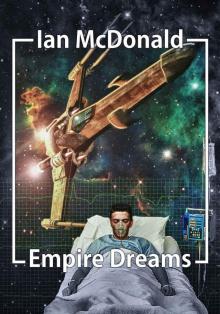 Empire Dreams
Empire Dreams The Menace from Farside
The Menace from Farside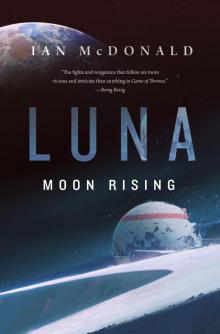 Luna: Moon Rising
Luna: Moon Rising Moon Rising
Moon Rising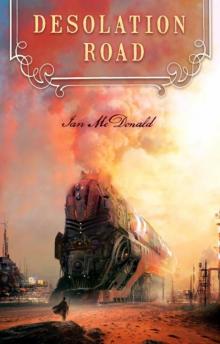 Desolation Road dru-1
Desolation Road dru-1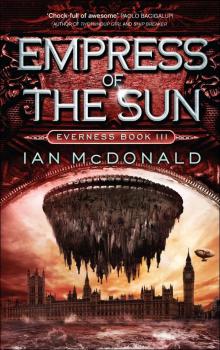 Empress of the Sun
Empress of the Sun Ares Express dru-2
Ares Express dru-2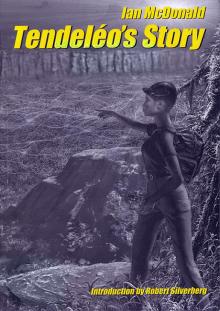 Tendeléo’s Story
Tendeléo’s Story River Of Gods
River Of Gods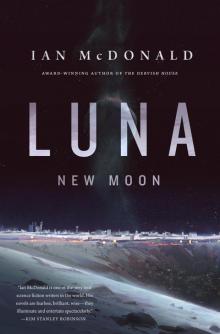 Luna
Luna![Cyberabad Days - [River of Gods 02] Read online](http://i1.bookreadfree.com/i1/03/29/cyberabad_days_-_river_of_gods_02_preview.jpg) Cyberabad Days - [River of Gods 02]
Cyberabad Days - [River of Gods 02] Clarkesworld Magazine Issue 76
Clarkesworld Magazine Issue 76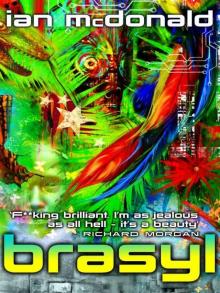 Brasyl (GollanczF.)
Brasyl (GollanczF.)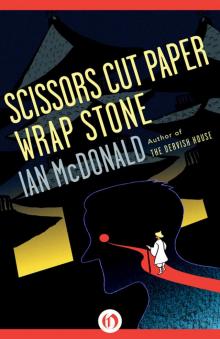 Scissors Cut Paper Wrap Stone
Scissors Cut Paper Wrap Stone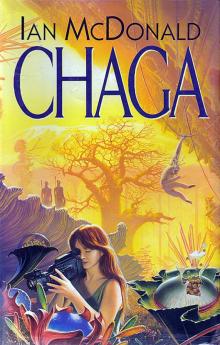 Chaga
Chaga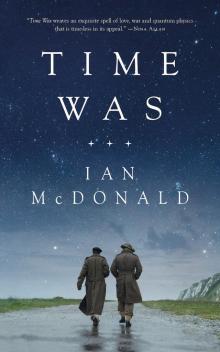 Time Was
Time Was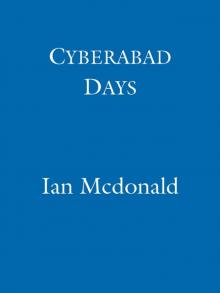 Cyberabad Days
Cyberabad Days Be My Enemy
Be My Enemy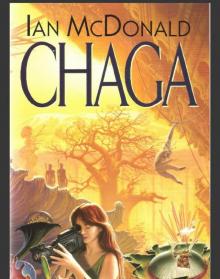 Changa
Changa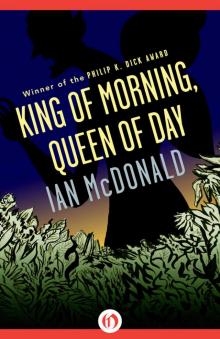 King of Morning, Queen of Day
King of Morning, Queen of Day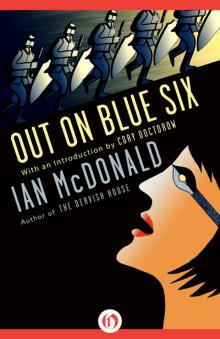 Out on Blue Six
Out on Blue Six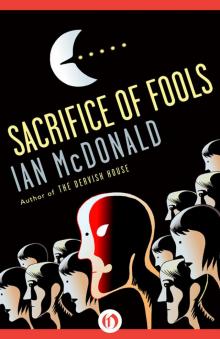 Sacrifice of Fools
Sacrifice of Fools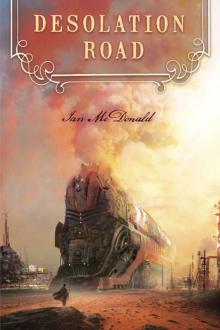 Desolation Road
Desolation Road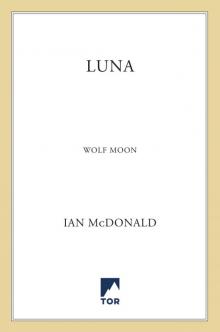 Luna--Wolf Moon--A Novel
Luna--Wolf Moon--A Novel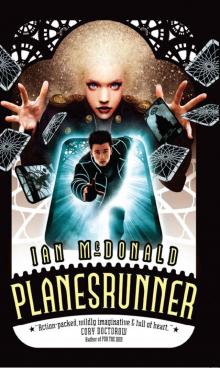 Planesrunner (Everness Book One)
Planesrunner (Everness Book One) Ares Express
Ares Express